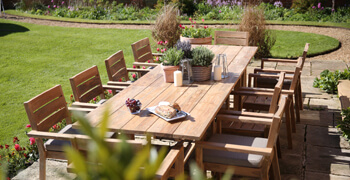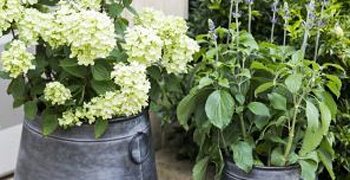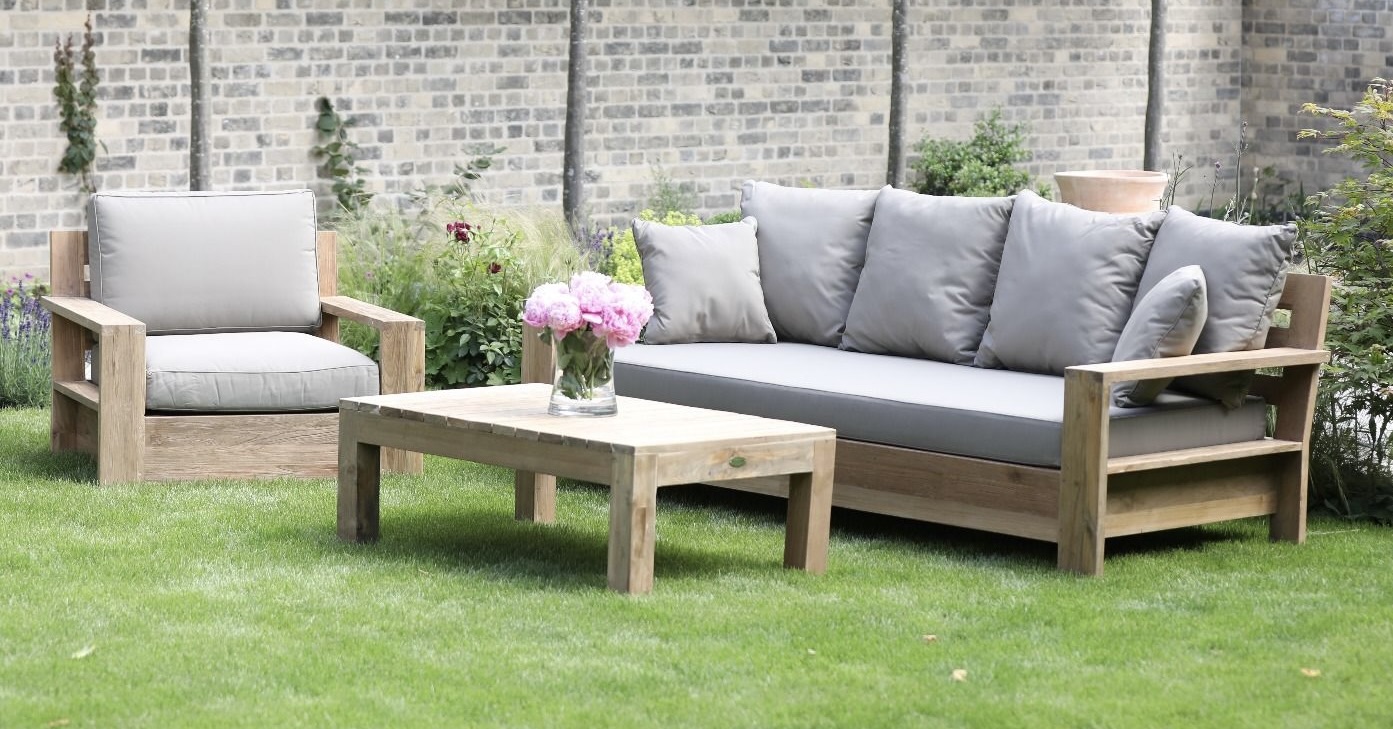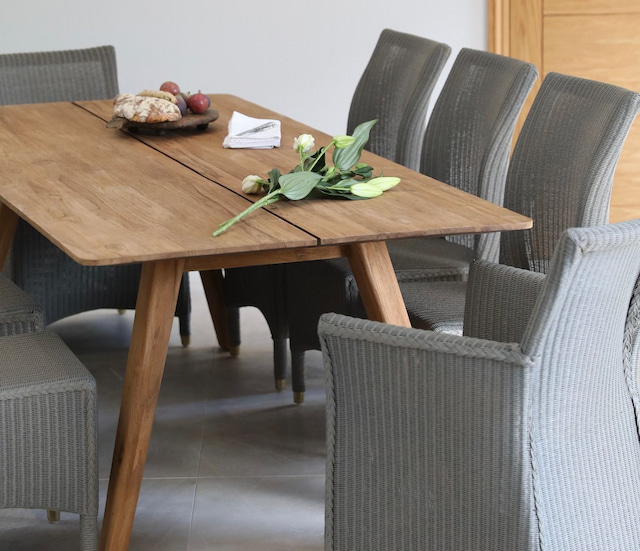-
Garden Furniture
- View All
-
Relax & Dine
- Relax & Dine
- Benches
- Chairs
- Tables
- Daybeds and Sofas
- Table and Chair sets
-
Wicker & Concrete
- Wicker & Concrete
- Wicker Furniture
- Polished Concrete
- Reclaimed Furniture
- Sun Loungers
- Accessories
-

-
Collections
-
Home Furniture
- View All
-
Living Room & Dining Chairs
- Living Room & Dining Chairs
- Living Room
- Dining Chairs
- Conservatory
- Dining Tables
-

-
Sale
-
Outlet
-
Our Story
How to Protect Your Outdoor Teak Furniture

Did you know...Teak has been used to build boats for over two millennia. It's no wonder that this hardwood is an excellent choice for outdoor furniture since it's exceptionally strong and durable, water-resistant and also highly resistant to rot, fungi and mildew due to its high natural oil and resin content.
Besides, teak is much more versatile and easier to work with than other natural woods, while being highly resistant to shrinkage, surface splitting and checking. As a result, teak is usually the preferred choice for most homeowners and even seasoned professionals for any type of interior or exterior wood-based structure and support. But it is especially popular for outdoor furniture, which can complement any garden with a more elegant yet rustic touch.
Can teak furniture be left out in the rain?
The short answer is yes, since teak can repel water due to its high oil and resin content. Teak outdoor furniture normally does not require a lot of care and maintenance and can last for 30 years or more, even when left outdoors all year round in the sun, wind, rain, sleet or snow. Although, if you'd like better peace of mind, we've got a few suggestions for extra protection while keeping your teak furniture looking as good as new:
Give it a thorough clean once in a while

 The outdoor teak furniture, as with any untreated timber structure, will change colour from its original golden or deep brown to a weathered grey patina over time. This is normal for any wood that has been exposed to a lot of sunlight and other weather elements, and it has no effect on the teak's durability or strength. Many choose to let their outdoor teak furniture age naturally since it takes less upkeep and allows for an antique, weathered look over time.
The outdoor teak furniture, as with any untreated timber structure, will change colour from its original golden or deep brown to a weathered grey patina over time. This is normal for any wood that has been exposed to a lot of sunlight and other weather elements, and it has no effect on the teak's durability or strength. Many choose to let their outdoor teak furniture age naturally since it takes less upkeep and allows for an antique, weathered look over time.
If you prefer a silvery, grey colour, then you will simply need to give your teak outdoor furniture a thorough cleaning once a year. A bucket of soapy water and a sponge can do the job of cleaning and removing surface stains, although applying a coat of teak patinizer can help maintain its natural greyish charm.
Use a teak protector to restore or maintain your teak outdoor furniture to its original colour

 The process is a little different for restoring or maintaining the original colour of your teak furniture, and both can be done using a water-based teak cleaner and a teak protector. For restoring the old teak outdoor furniture:
The process is a little different for restoring or maintaining the original colour of your teak furniture, and both can be done using a water-based teak cleaner and a teak protector. For restoring the old teak outdoor furniture:
- You can use a sponge and soapy water for cleaning, but a water-based teak cleaner can be much more effective in removing surface grime and stains, and even the natural layer of mildew.
- Allow the teak to dry for two to three weeks in a well-ventilated and sunny area before applying a teak protector. This will restore the appearance of the teak outdoor furniture to a golden or light brown colour, while also protecting it against any permanent stains from food and drink spills, including tea, coffee, ketchup, red wine, etc.
It might also be handy to gently rub some fine sandpaper onto the teak to give it a smooth finish and make it look as good as new! - You can apply a teak protector every 6 to 8 months to maintain the original colour.
For maintaining your new teak outdoor furniture, it is best to leave it outdoors for the next one to two weeks before applying a teak protector or sealer to the surface. You can then apply a teak protector every 6 to 8 months while cleaning the surface with a teak cleaner once a year.
Store it indoors in well-ventilated spaces

Teak furniture can be left outside all year round, although there are a few things you can do if you prefer to cover it during winter or put it away when not in use. To cover your teak furniture for the winter, you can use a breathable material that allows the wood to breathe while also protecting the surface from the outside weather.
It is also best to store your teak furniture in watertight, well-ventilated indoor spaces away from any heat source since prolonged heat exposure in a poorly-ventilated room can speed up the process of timber drying out and the formation of cracks.